




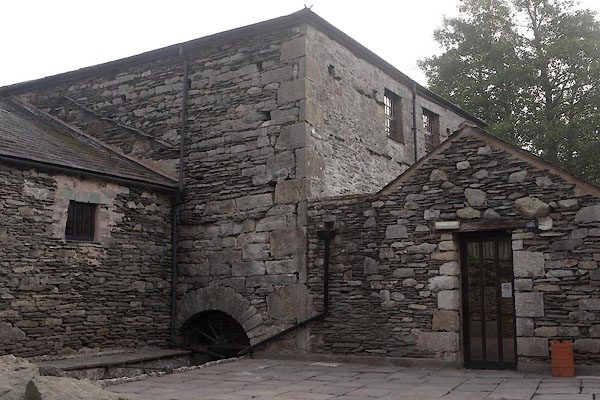
CBQ73.jpg (taken 12.9.2014)
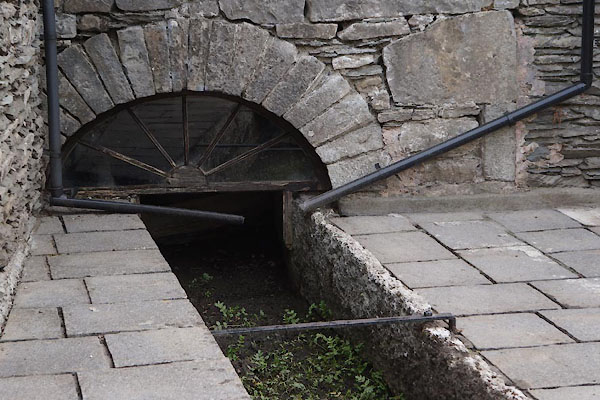
CBQ74.jpg (taken 12.9.2014)
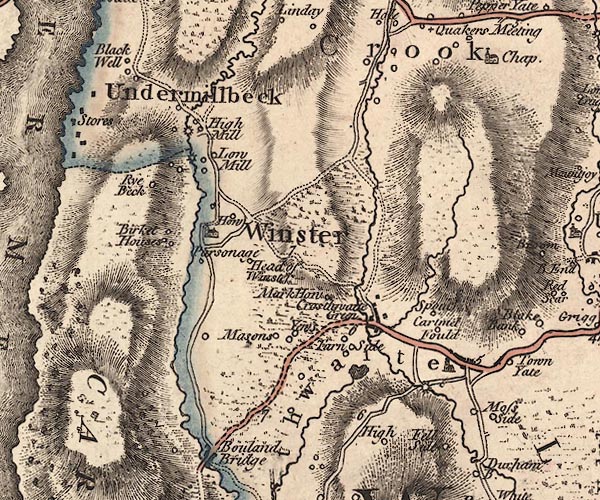
J5SD49SW.jpg
circle with rays; water mill
item:- National Library of Scotland : EME.s.47
Image © National Library of Scotland
placename:- Crosthwaite Corn Mill
courtesy of English Heritage
"CROSTHWAITE CORN MILL WITH ADJOINING STORE, KILN, STABLE AND MILL RACE / / MILL LANE / CROSTHWAITE AND LYTH / SOUTH LAKELAND / CUMBRIA / II / 77113 / SD4408490784"
courtesy of English Heritage
"Corn mill and adjoining ancillary buildings. Crosthwaite water corn mill first mentioned in C13; present building probably C18 with later additions and alterations. Small, coursed rubble (mainly slate) used in earlier work with coursed, squared limestone rubble used for later work: dressed quoins throughout. Mill race trough is constructed of large limestone slabs held together with iron clamps. Mostly graduated slate roofs; mill roof is pyramidal, kiln roof is pyramidal, kiln roof has raised slates on each pitch serving as vents. Corrugated asbestos roofs to stable and outshut on north side of store. Mill is square in plan: 3 storeys, 2 bays. 4-bay store adjoining east side was originally 2-storeyed: roof was raised and 3rd storey added, probably in early C19. Present 2-storey, 2-bay kiln adjoining north side of mill replaced narrower, taller, building on same site. 3-bay stable adjoining west side of mill was originally 2-storeyed: 1st floor was taken down in mid C20. Plank doors: casements (some small-paned) used throughout. Some blocked openings. Water enters and leaves mill via semicircular openings to west end of north and south walls. Stable has central segment-headed cart door with window to either side. Interior: Main mill machinery was last used in late 1960s and remains intact. 4 stones (one dated 1860) could be driven by high breast wheel with metal floats: additional stone driven by petrol engine. Extensive ancillary machinery includes sack hoist, 2 stone cranes, and oatmeal riddle. Main roof supported on crown post, with carpenters marks. Lower storey of kiln building has 2 furnaces (originally peat-fired) separated by barrel-vaulted passage: one drying floor has been concreted over, other retains original floor with perforated clay tiles laid on iron bars."
courtesy of English Heritage
"MILL DAM WITH WEIR SLUICE GATES, AND MILL RACE / / MILL LANE / CROSTHWAITE AND LYTH / SOUTH LAKELAND / CUMBRIA / II / 77116 / SD4404290774"
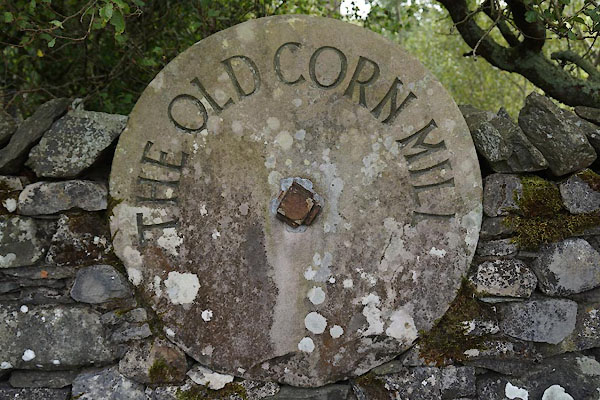
CBQ79.jpg Sign.
(taken 12.9.2014)
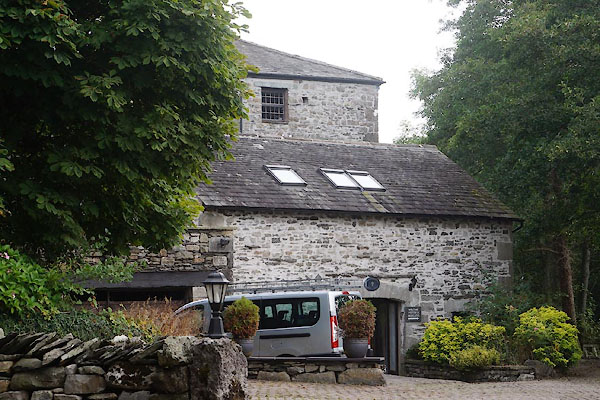
CBQ72.jpg (taken 12.9.2014)

 Lakes Guides menu.
Lakes Guides menu.